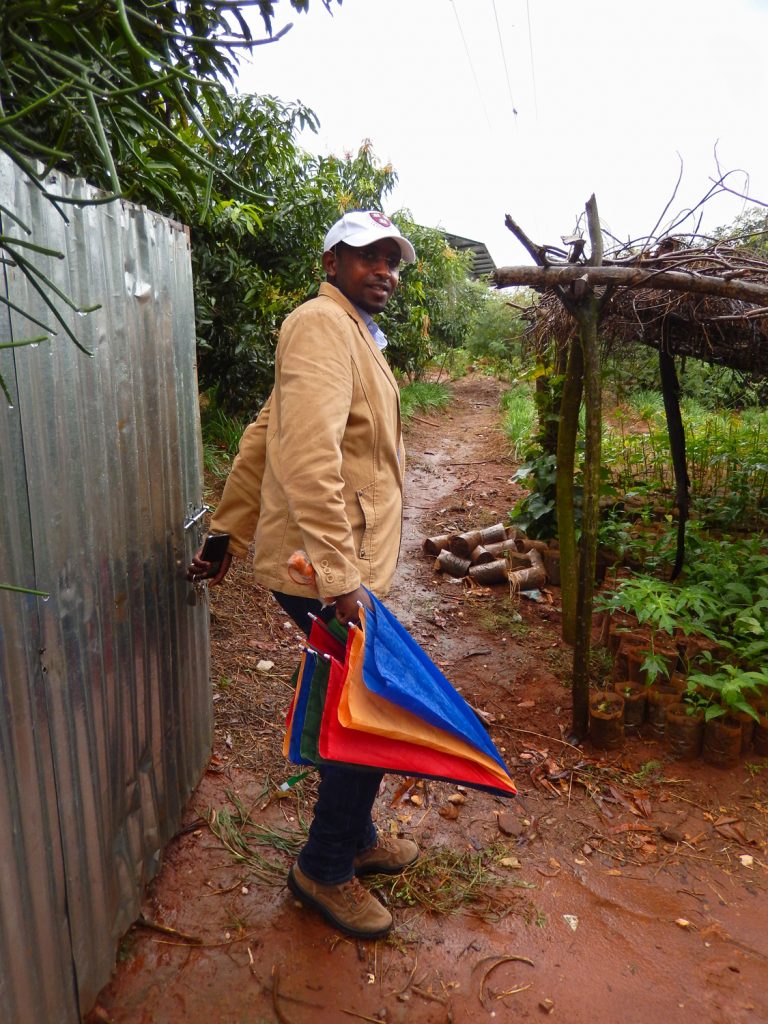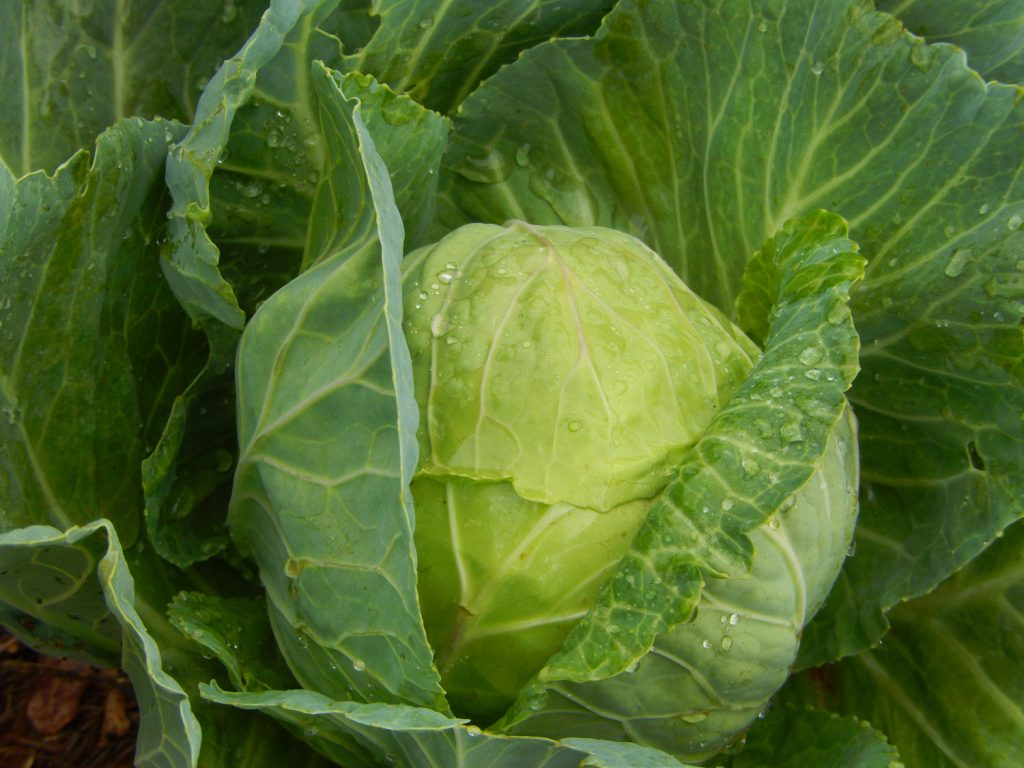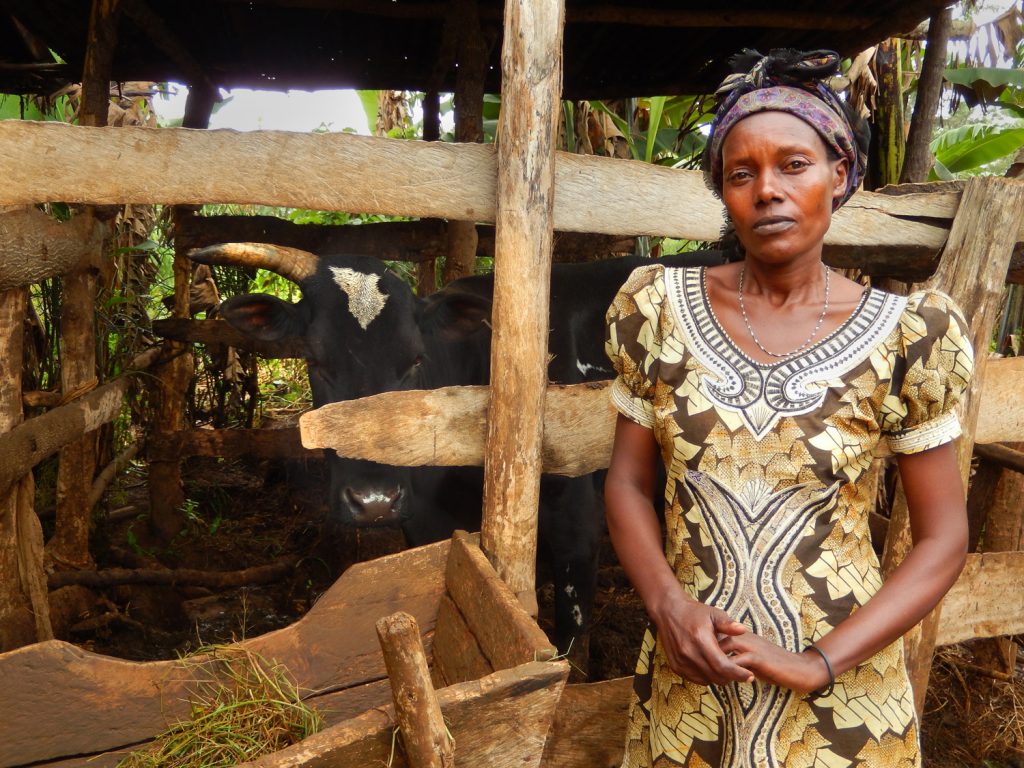Health in a Rwandan Hospital Garden
Hospitals have many tools at their disposal. A garden is not typically one of them (not in the healthcare system I am accustomed to in the United States, anyway). When I traveled to Rwanda last year on a fellowship through the International Women’s Media Foundation, I found a hospital treating malnutrition with compost and garden hoes. [1] [1] Reporting for this story was supported by the International Women’s Media Foundation.
The Rwinkwavu District Hospital sits among an expanse of farmlands in eastern Rwanda. It’s a couple of hours by car from the capital, Kigali, down a bumpy red-dirt road through undulating hills that seem to extend forever. The hospital grounds have a three-quarter-acre garden with vegetables, herbs, fruit trees, compost piles, rabbit hutches, irrigation ponds, and classrooms for horticulture lessons and demonstrations.
Patients not only learn to grow a diversity of ingredients—they learn to cook well-balanced meals too. Some are given animals to take home (for meat or milk) on the promise to pass the first offspring to their neighbors (who will agree to do the same). This is all part of an innovative program, supported by U.S.-based Partners In Health, to treat malnutrition through gardening, education, and community healthcare. “Here, it is like a school,” says Fulgence Nkikabahizi, the hospital’s medical director. Many Rwandans have enough food, he says, but lack the knowledge to feed their families a balanced diet (an increasingly common problem worldwide).
“I have never thought that one day I would be working in a hospital,” garden manager Sebu Gaston tells me. The fruitful parcel of land produces cabbage, carrots, lettuce, celery, sweet peppers, onions, garlic, chives, beets, avocados, oranges, eggplants, and more. “We teach people how to make compost, how to use that compost, how to make nurseries,” Gaston says. He points to a terraced garden that works in limited space. The circular, layered bed can be built with sticks and old tires or rice sacks. In the center is a hole for gray water and kitchen scraps. It all turns to compost, feeding the plants around it. Gaston also teaches patients how to grow species that fix nitrogen in the soil (thereby requiring fewer fertilizers), and to store water for use in the dry season.
The garden program is working. Until about six years ago, the hospital had a ward dedicated to malnourished children, but it’s no longer necessary. “There is no need to hospitalize 10 children a week,” Nkikabahizi says. “It’s like severe malnutrition disappeared.”
That’s a big change since the 1994 Rwandan genocide, one of the most brutal atrocities of the 20th century, in which an estimated 800,000 people were killed in the span of 100 days. When it ended, the country’s healthcare system was in shambles. For years, chronic malnutrition persisted nationwide. It wasn’t enough to treat symptoms; root causes had to be addressed.
Rwinkwavu Hospital staff aim for long-term solutions. Follow-up care is key, and so is a deep understanding of local culture and family life. For example, some patients don’t know how to cook a variety of foods, or they don’t understand the nutritional requirements of a balanced diet. Some families raise chickens for the eggs—to sell, but not to eat. Sometimes there is trouble between a husband and wife, and the children aren’t fed. Sometimes a husband doesn’t want to spend money on food. It’s critical to understand the real, nuanced reasons people eat poorly, says Evelyne Mukakabano, head of Rwinkwavu’s social workers. That’s why she’s part of the program’s follow-up care, which tracks patients after they leave the hospital and return to their villages.
The hospital works with local health centers to offer once-a-month cooking classes for the community, Mukakabano says, so villagers “know how to use their local food, food they produce themselves.” A typical Rwandan meal is heavy in carbohydrates—rice, potatoes, cassava, plantains, and maize—but it often lacks necessary fats and proteins, as well as the diversity of nutrients found in fruits and vegetables.
The Rwinkwavu program is also part of a nationwide grassroots network of elected village volunteers who serve as community health advisers, “working in the community day by day, house to house,” Nkikabahizi says. Community health advisers identify early signs of illness, treating minor issues in the village and referring serious cases to the hospital. The end result, Nkikabahizi says, is a profound “decrease of morbidity.”
But it does something else too: It helps build trust among neighbors who still suffer the aftershocks of genocide. “I feel like I can help,” says Mutumwinka Jackline, a community health adviser who mainly counsels orphans and widows who have HIV (often as a result of rape during the genocide). “With my energy, I can wake up during the night and go to visit the one who is sick,” she tells me. “I can take porridge, cook porridge.” Sometimes a hand to hold or a home-cooked meal is all an ailing neighbor needs, she says. But when an illness is beyond her capacity to help, she can direct that person to a doctor.
After the genocide, Rwanda suffered some of the world’s worst rates of poverty, disease, and early mortality. But now the country is a global leader in health development. In recent years, Rwanda has seen the steepest declines in premature mortality ever recorded, reports Dr. Paul Farmer, an anthropologist and a Partners In Health founder, in this Guardian podcast. An emphasis on the cultural and social aspects of health is part of the reason.





























